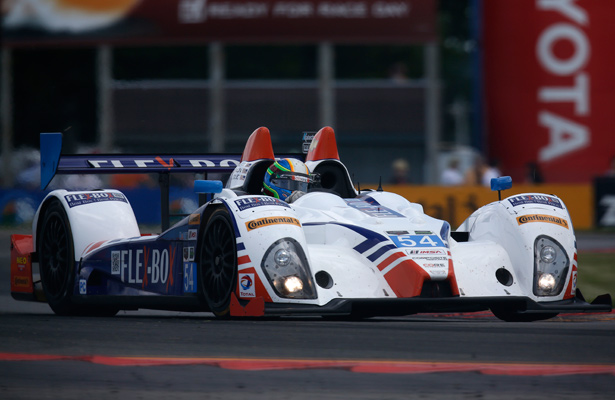
Photo: IMSA
Watkins Glen is an old-school style race track that, in my opinion, we need more of in the U.S.; places like Road America, Mid-Ohio, or Sebring.
There’s not a lot of runoff, there’s a lot of fast, flowing corners and lot of natural terrain. It makes it a very unique place; a place with great rhythm.
It’s getting a bit older and I think they’re going to be repaving it soon, which is great, but also kind of disappointing. All the bumps, seams, cracks, sealer and concrete make Watkins Glen what it is and make it a lot of fun to drive and very challenging.
We were definitely keeping an eye on the weather forecasts for the weekend, but knew it was going to be up in the air.
It seems like Watkins Glen has always been one of those places where the forecast says it’s going to rain or it’s not going to rain and then it ends up doing the opposite. We didn’t know how the weather would play out so we just had to be prepared for whatever we were dealt.
We were a little disappointed with the decision to cancel qualifying. We were going to have Jon qualify and he loves to drive in the rain. I know he was looking forward to qualifying in the wet. It’s a tough call though. How much water is too much water on the race track?
During the race, it was interesting when it went from being a very dry race track to when it started to rain and all the teams had to make a decision on whether to change to rain tires.
You have to look ahead and see what the weather is going to do, because you don’t want to put the rain tires on if it’s going to stop raining.
We were trying to figure out what the right choice was and we stayed out for a long time on slick tires in the rain, because we thought it was going to stop.
I have to say, I was impressed with how good the slick Continental was in the rain. Eventually, enough was enough and we had to concede that it wasn’t going to stop and we needed to change to rains.
We put the rain tires on and then two or three laps later I had a spin at the exit of the last corner and was fortunate not to hit anything. I caught the painted pit-in line—I crossed it just a tiny bit—and got into a sideways spin.
The red flag was another tough call. The conditions were really challenging. When they did throw the red flag I was a little surprised, because I felt like the rain was actually starting to lighten up at that point.
For us, we were trying to make up some time and charge to the front, so I was definitely disappointed that the red came out. I wanted to keep going and keep moving up. I’m sure it was a hard decision for race control with a lot of factors at play.
When I pulled into pit lane during the red, I was quite glad to see our crew guys Cesar and Jay walking toward me with an umbrella!
Under my breath I was cursing the drivers lucky enough to be in closed cockpit cars, but then I thought of some races in the summer, like Lime Rock, where it’s hot and humid and the closed cockpit guys will be cooking and we’ll be enjoying the breeze!
Like I said before, the changing surface at Watkins Glen makes it a unique challenge, especially in the rain. In the dry, the concrete and sealer patches have good grip, but in our car particularly, in the wet, it seemed like those areas turned to ice.
Anytime you got near the concrete, sealer or paint, there was a massive loss of grip. In some places, it’s really hard to avoid those spots too. It was very difficult at times to just stay on the race track.
For me, Watkins Glen was one of the most challenging races in recent memory, between tire strategy and keeping our car on the track.
I think if the race had been completely dry we would have had a good shot at the win. We had the fastest race lap in the dry and a really solid race car.
Considering the difficult conditions, we were lucky to come away with good points and still in the lead of the championship. I know if we keep doing our jobs it’ll lead to us race win eventually.


























